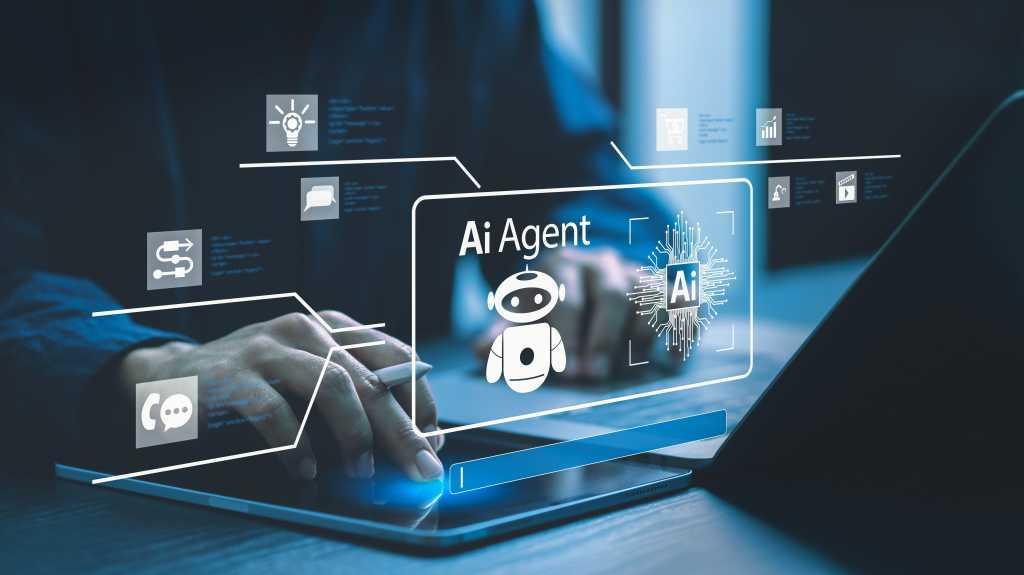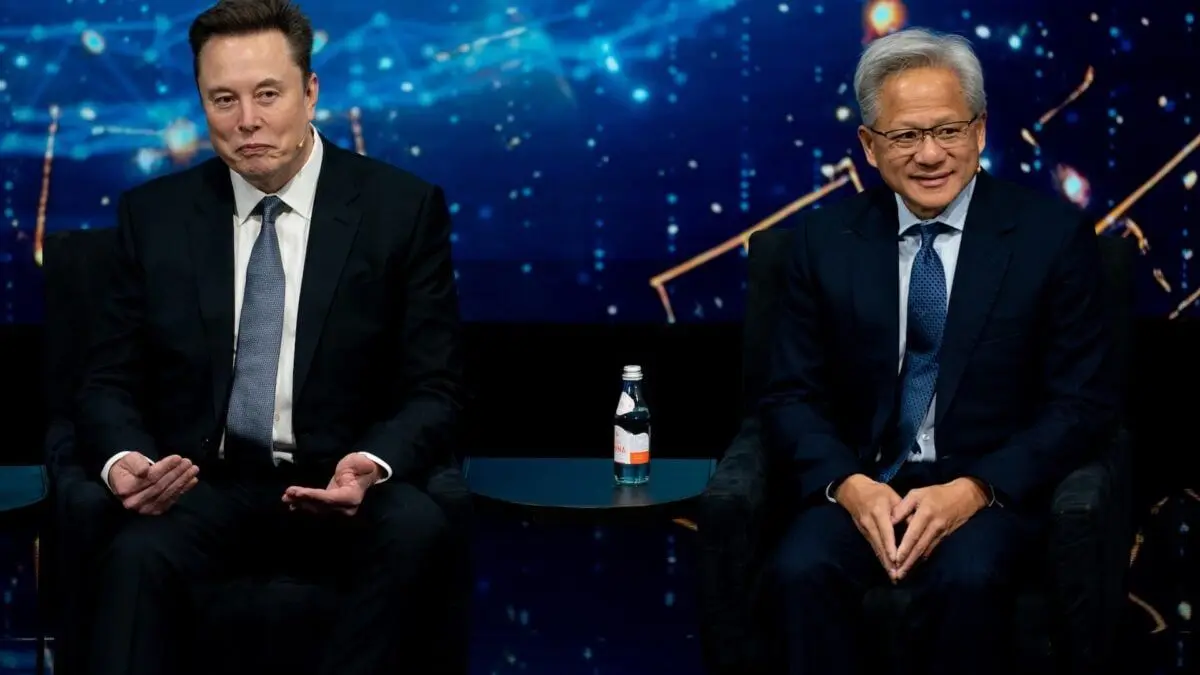AGNTCY: A New Open-Source Initiative for AI Agent Interoperability
2 Sources
2 Sources
[1]
How Cisco, LangChain, and Galileo aim to contain 'a Cambrian explosion of AI agents'
Around 500 million years ago, the world exploded with complex life. Prior to what is known as the Cambrian era, the planet was populated primarily with simple, microscopic organisms. But during the Cambrian period, creatures with complex body structures emerged. Scientists who study such things call this the "Cambrian explosion" because it was a period of rapid evolution. Major animal groups emerged, competition and predation for food resources increased, and new ecosystems appeared. Also: Crawl, then walk, before you run with AI agents, experts recommend As you might imagine, the lab rats and grant chasers are still debating why it all happened so "suddenly." In evolutionary terms, "suddenly" is about 20 million years. The consensus is that a bunch of factors came together, including increased oxygen levels, genetic transformations, environmental changes, and a sort of arms race fostered by natural selection. Why the sudden history lesson in an article that's supposed to be about AI? The answer can be found in an announcement by a consortium comprised of the AI nerd herds at Outshift by Cisco (the company's R&D and incubation engine), Galileo (which specializes in agent trust and observability), and LangChain (whose raison d'être is agent orchestration). They believe that, as much as generative AI has been a fast mover, "We're witnessing a Cambrian explosion of AI agents." This...might not be so good. AI agents are self-directed entities designed to carry out certain tasks. In many cases, those tasks will take them from infrastructure to infrastructure, often needing to pass through the walled gardens that vendors set up to lock in customers and avoid brand dilution. So how do we deal with this? Obviously, turning off all computers, moving to a yurt, and sitting in a corner rocking back and forth while keening the tune to Frozen's 'Let It Go', is probably not a strategy for successful governance. But perhaps there is a way. Perhaps we could coordinate agents so they could work together. If only there was a word that described an organization that managed a group of agents, like an agency. Also: The future of Google Search just rolled out on Labs - and AI Mode changes everything Nah. Not hip enough. Let's get rid of most of the vowels. What about... wait for it... AGNTCY? I know, you were thinking Skynet. But AGNTCY works, too. Cisco, LangChain, and Galileo are founding members of an open-source collective that is building critical infrastructure for agents to work together. They contend that while individual agents can handle small tasks, the real power is in groups of agents working together (like groups of humans working together) to accomplish bigger tasks. Currently, such interoperability and standardization are lacking. AGNTCY aims to define and specify an open and interoperable "Internet of Agents" to link AI agents that can transcend vendor and organizational boundaries (presumably with the appropriate security protocols in place). Cisco brings its networking infrastructure expertise to the table. According to Guillaume De Saint Marc, vice president of engineering at Outshift by Cisco, "We're at an inflection point in AI where the next wave of innovation will come from agents working together. Building this infrastructure as open source ensures it will serve the entire ecosystem, not just individual vendors." The infrastructure for an Internet of Agents isn't in place yet. According to the team, the best possible multi-agent workflow requires finding the right agents for a given job, connecting them into efficient workflows that can function across frameworks and vendors, running them at scale, running them securely, monitoring performance, and improving and tweaking over time. Also: How businesses are accelerating time to agentic AI value The AGNTCY approach tries to avoid silos that can limit effectiveness. The purpose of the AGNTCY collective is to create open specifications and reference architectures built using open-source technologies to tackle "the end-to-end requirements for sourcing, creating, scaling, and optimizing agentic workflows from a single app to thousands." Harrison Chase, CEO of LangChain, describes AGNTCY in this way: "Multi-agent systems are the future of AI, but we need open standards for both collaboration and rigorous assessment. The AGNTCY creates the foundation for a truly observable and trustworthy AI ecosystem...to ensure agents perform reliably across diverse scenarios, empowering organizations to deploy at scale." Architecturally, the group envisions something like this: AGNTCY is starting its work in three main areas. Interestingly, the group is publishing its specs for each of these elements on GitHub for you to review and provide feedback. When I read this, I was thinking of the plugin directory for WordPress. One of the primary reasons open-source WordPress has become so ubiquitous on the web is that individual websites can be built using the WordPress framework and then selected from thousands of plugins that perform individual jobs. Also: 4 ways to get your business ready for the agentic AI revolution More than anything else, it looks like AGNTCY is trying to turn the world of AI agents into one of frameworks and plugins. That makes a ton of sense. It could make this whole thing much more manageable than the chaos of a world of unrestricted AI agents running wild. The AGNTCY founding team has asked for your help. You can participate by visiting agntcy.org or jump into the GitHub repos and look around. What do you think about AGNTCY's vision for an internet of agents? Do you see AI agents working together as the next big step in artificial intelligence, or do you think the risks outweigh the benefits? Have you explored any of the open-source specs they've released? How do you feel about the idea of a standardized agent directory, or do you think a decentralized approach would be better? Let us know in the comments below.
[2]
A standard, open framework for building AI agents is coming from Cisco, LangChain and Galileo
Join our daily and weekly newsletters for the latest updates and exclusive content on industry-leading AI coverage. Learn More One goal for an agentic future is for AI agents from different organizations to freely and seamlessly talk to one another. But getting to that point requires interoperability, and these agents may have been built with different LLMs, data frameworks and code. To achieve interoperability, developers of these agents must agree on how they can communicate with each other. This is a challenging task. A group of companies, including Cisco, LangChain, LlamaIndex, Galileo and Glean, have now created AGNTCY, an open-source collective with the goal of creating an industry-standard agent interoperability language. AGNTCY aims to make it easy for any AI agent to communicate and exchange data with another. Uniting AI Agents "Just like when the cloud and the internet came about and accelerated applications and all social interactions at a global scale, we want to build the Internet of Agents that accelerate all of human work at a global scale," said Vijoy Pandey, head of Outshift by Cisco, Cisco's incubation arm, in an interview with VentureBeat. Pandey likened AGNTCY to the advent of the Transmission Control Protocol/Internet Protocol (TCP/IP) and the domain name system (DNS), which helped organize the internet and allowed for interconnections between different computer systems. "The way we are thinking about this problem is that the original internet allowed for humans and servers and web farms to all come together," he said. "This is the Internet of Agents, and the only way to do that is to make it open and interoperable." Cisco, LangChain and Galileo will act as AGNTCY's core maintainers, with Glean and LlamaIndex as contributors. However, this structure may change as the collective adds more members. Standardizing a fast-moving industry AI agents cannot be islands. To reach their full potential, they must be able to communicate with other agents that lie outside of an enterprise's network. This is where interoperability comes in. Setting standards in traditional industries is challenging enough; it becomes even more difficult for technology like AI, where upgrades and model changes occur every few months. However, this is not the first time a standard has been proposed for generative AI. LangChain, one of AGNTCY's core members, has its own protocol for working with agents built on frameworks other than LangChain. The Agent Protocol, launched in November last year, allows LangChain agents to talk to agents created with AutoGen, CrewAI or any other framework. Meanwhile, Anthropic announced its Model Context Protocol (MCP) in November. This protocol aims to standardize how models and AI tools connect to data sources. But while many developers have embraced MCP, it's not exactly a standard just yet. Yash Sheth, cofounder of AI evaluation platform Galileo, said standardization "is critical." "Standardization is needed, in fact, it will drive increased velocity for agentic adoption. Today, teams are building in silos, having to figure out how to develop their own infrastructure components from scratch," Sheth said in an email. "Standardization of multi-agentic systems can only happen if these agents powered by non-deterministic models have a strong anchor in measuring and reporting their performance, accuracy and reliability." Sheth admits that making AI agents interoperable can be complex. AGNTCY "wants to encourage developers to extend these specs, APIs and tools to suit their needs instead of reinventing the wheel, which will be crucial to achieving standardization." LangChain CEO Harrison Chase said in a separate conversation that creating a standard is not impossible, especially now that it's easier to build the agents themselves. "Building agents is already possible, and being done. Replit, Klarna, LinkedIn, Uber, Appfolio and many others have all already done this. Agents aren't a thing of the future, they are now. Now that we know how to build agents, the next step is to allow them to connect to each other. That is what a standard agent protocol will help enable," Chase said. A platform and a language all at once Pandey envisions AGNTCY as more than just a set of codes for agents. It will also allow customers to discover agents from different developers who run the AGNTCY standard. "Customers can stitch together all these agents on the AGNTCY platform so they can discover, compose, deploy and evaluate as they build their workflows," Pandey said. AGNTCY still needs to recruit more AI players to add new agents to the platform and gain momentum as a standard. After all, for something to become an industry standard, there needs to be mass adoption, to prevent the establishment of too many competing standards. That's where projects like AGNTCY face an uphill battle. Pandey said the collective has been speaking with many other industry players, and they want to get as many viewpoints as possible while developing the platform. That will take time. In the meantime, enterprises continue to experiment and even deploy AI agents. Maybe in the future, these will all be able to speak to each other.
Share
Share
Copy Link
Cisco, LangChain, and Galileo launch AGNTCY, an open-source collective aiming to create standardized infrastructure for AI agents to work together across vendor boundaries.

The Rise of AI Agents and the Need for Standardization
In a development likened to the Cambrian explosion, the world of artificial intelligence is witnessing a rapid proliferation of AI agents. These self-directed entities, designed to carry out specific tasks, are becoming increasingly prevalent, leading to what experts call "a Cambrian explosion of AI agents"
1
. This rapid growth, however, brings with it challenges of interoperability and standardization across different platforms and vendors.AGNTCY: A Collaborative Effort for AI Agent Interoperability
To address these challenges, a consortium comprising Outshift by Cisco, LangChain, and Galileo has announced the formation of AGNTCY, an open-source collective aimed at building critical infrastructure for AI agents to work together
1
. The initiative seeks to define and specify an open and interoperable "Internet of Agents" that can transcend vendor and organizational boundaries2
.Key Objectives and Architecture
AGNTCY's primary goal is to create open specifications and reference architectures using open-source technologies. The collective is focusing on three main areas:
- Agent discovery and selection
- Workflow composition and execution
- Observability and evaluation
The group envisions an architecture that allows for sourcing, creating, scaling, and optimizing agentic workflows from a single app to thousands
1
.Industry Perspectives on AGNTCY
Guillaume De Saint Marc, VP of Engineering at Outshift by Cisco, emphasizes the importance of this initiative: "We're at an inflection point in AI where the next wave of innovation will come from agents working together. Building this infrastructure as open source ensures it will serve the entire ecosystem, not just individual vendors"
1
.Harrison Chase, CEO of LangChain, views AGNTCY as foundational for a trustworthy AI ecosystem: "Multi-agent systems are the future of AI, but we need open standards for both collaboration and rigorous assessment"
1
.Challenges and Potential Impact
Standardizing a rapidly evolving field like AI presents significant challenges. Yash Sheth, co-founder of Galileo, acknowledges the complexity but emphasizes the critical nature of standardization for increased agentic adoption
2
. The initiative aims to encourage developers to extend these specifications, APIs, and tools to suit their needs, rather than reinventing the wheel.Related Stories
Future Vision and Industry Adoption
AGNTCY is not just a set of codes for agents but also a platform for discovering agents from different developers who adhere to the AGNTCY standard
2
. Vijoy Pandey, head of Outshift by Cisco, envisions AGNTCY as analogous to the development of TCP/IP and DNS, which organized the internet and allowed for interconnections between different computer systems2
.Open Participation and Next Steps
The AGNTCY founding team has invited the tech community to participate in this initiative. Developers and interested parties can visit agntcy.org or explore the GitHub repositories to review and provide feedback on the specifications
1
. As the collective seeks to recruit more AI players and gain momentum as a standard, it faces the challenge of achieving mass adoption to prevent the establishment of competing standards2
.References
Summarized by
Navi










